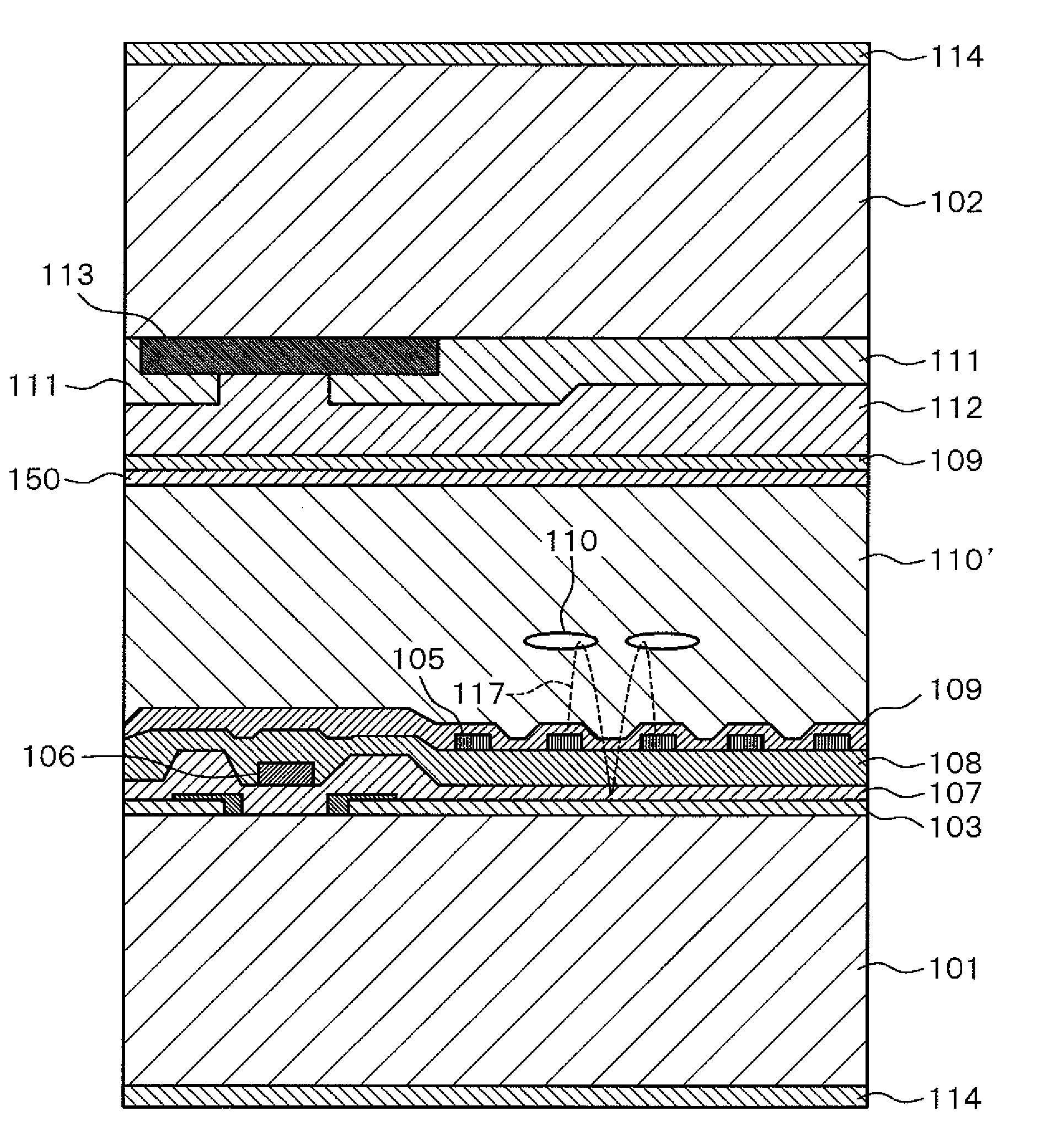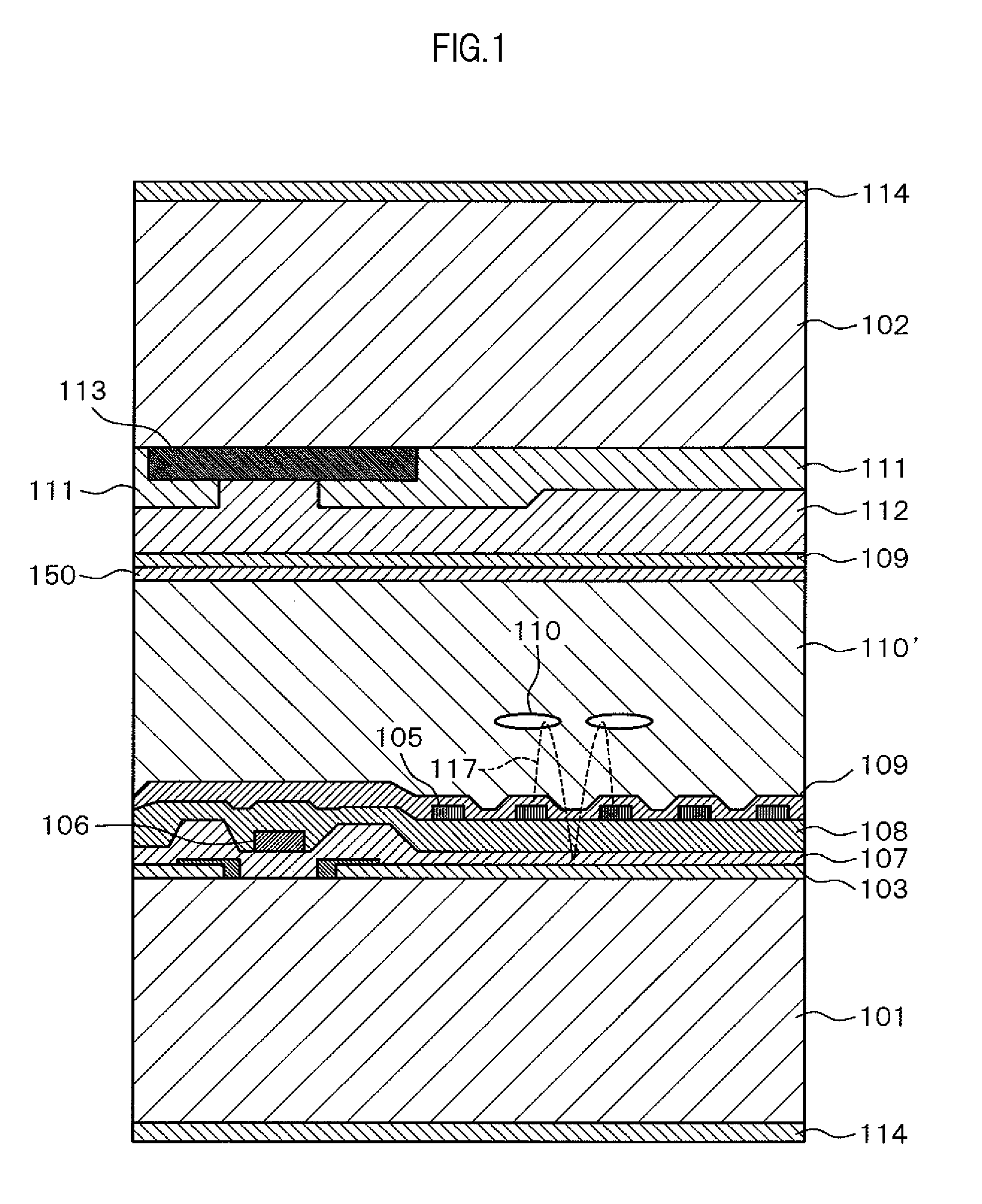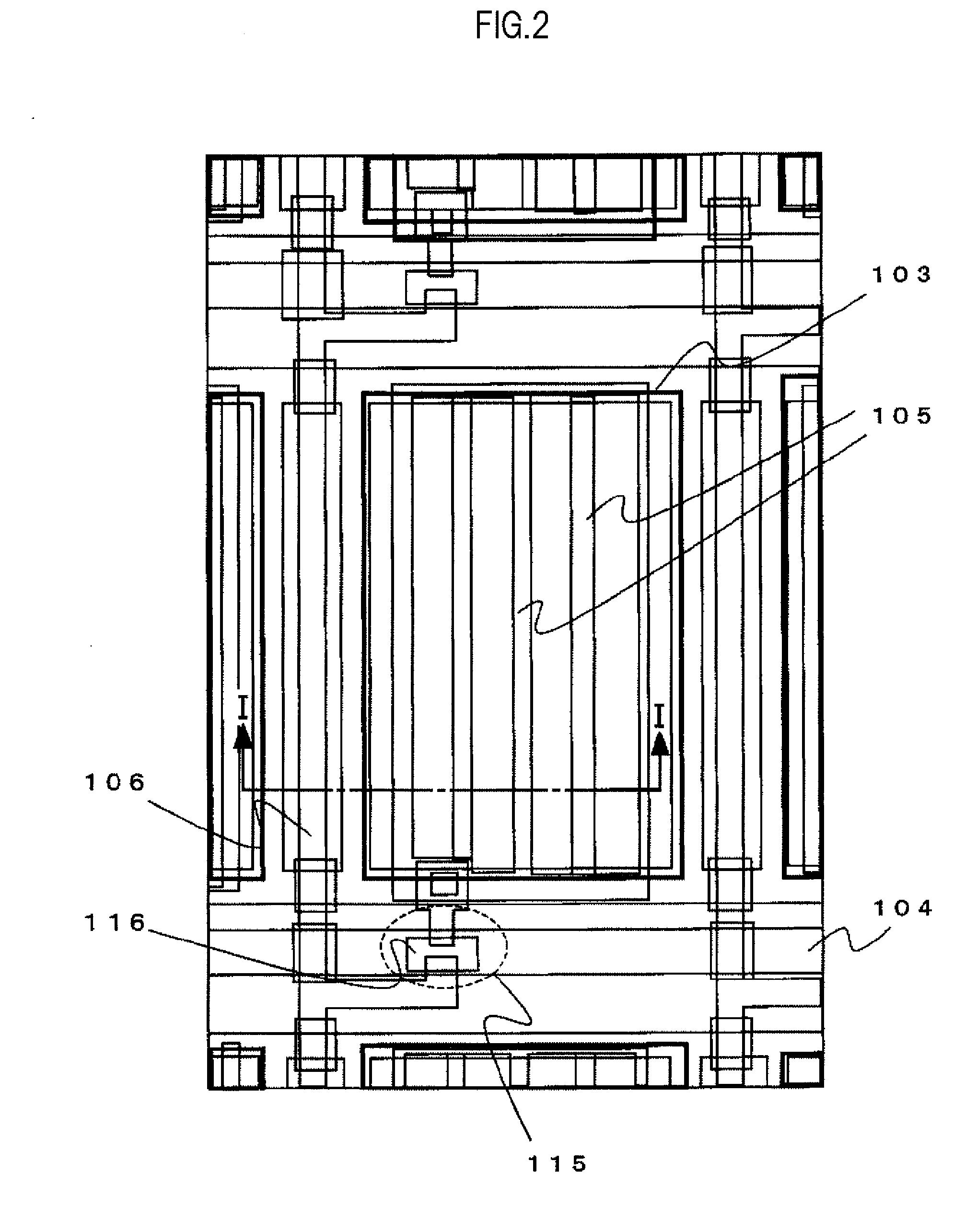Polarizer and liquid crystal display
- Summary
- Abstract
- Description
- Claims
- Application Information
AI Technical Summary
Benefits of technology
Problems solved by technology
Method used
Image
Examples
example 1
[0069]Equal moles of 2,7-diaminofluorene and cyclobutane tetracarboxylic acid dianhydride were added to an NMP solvent, and the mixture was stirred while being cooled with water, whereby a cyclobutane polyamide acid solution was obtained.
[0070]The solution was applied by spin coating onto a glass substrate A subjected to UV / ozone cleaning, and the whole was heated at 220° C. for 30 minutes, whereby a substrate B on which a polyimide thin film had been formed was produced.
[0071]The polyimide thin film of the substrate B was subjected to a rubbing treatment in accordance with an ordinary method, whereby a substrate C was obtained.
[0072]In addition, a substrate D was produced by irradiating the surface of the polyimide thin film of the substrate B with polarized ultraviolet (UV) light.
[0073]A high-pressure mercury lamp was used as a light source. UV light having a wavelength in the range of 240 nm to 380 nm was extracted through an interference filter, and the extracted light was turne...
example 2
[0078]A solution prepared by adding 5 wt % of C.I. Direct Blue 67, 0.7 wt % of NK ester CB 1 (manufactured by Shin-nakamura Chemical Corporation) as a crosslinkable monomer to a mixed solvent of NMP, y-butyrolactone, and water was applied to the substrates A, B, C, and D obtained in the same manner as in Example 1 with a barcoater, and the whole was dried at a temperature of 40° C. and a humidity of 70%. After that, the resultant was irradiated with UV light from a high-pressure mercury lamp at an irradiation energy of about 2 J / cm2, whereby polarization plates A-2, B-2, C-2, and D-2 corresponding to the substrates A to D were obtained.
[0079]The polarized light absorption spectra of those polarization plates were measured, and the degree of polarization (dichroic ratio) of each of the polarization plates was calculated. As a result, the degrees of polarization of the polarization plates A-2, B-2, C-2, and D-2 at a wavelength of 500 nm were 13, 22, 24, and 21, respectively.
[0080]The ...
example 3
[0082]A solution prepared by adding 5 wt % of C.I. Direct Blue 67, 0.9 wt % of 3,4-epoxycyclohexylmethyl-(3,4-epoxy)cyclohexane carboxylate as a crosslinkable monomer, and 0.3 wt % of an Irgacure 2959 (manufactured by Ciba Specialty Chemicals Inc.) as a photopolymerization initiator to a mixed solvent of NMP, y-butyrolactone, and water was applied to the substrate D obtained in the same manner as in Example 1 with a barcoater, and the whole was dried at a temperature of 40° C. and a humidity of 70%. After that, the resultant was irradiated with UV light from a high-pressure mercury lamp at an irradiation energy of about 1 J / cm2, whereby a polarization plate D-3 was obtained. In addition, a polarization plate D-3′ was produced at the same time in exactly the same manner as that described above except that the photopolymerization initiator was not added.
[0083]The polarized light absorption spectra of the polarization plates D-3 and D-3′ were measured, and the degree of polarization (d...
PUM
| Property | Measurement | Unit |
|---|---|---|
| Transparency | aaaaa | aaaaa |
| Heat | aaaaa | aaaaa |
| Birefringence | aaaaa | aaaaa |
Abstract
Description
Claims
Application Information
 Login to View More
Login to View More - Generate Ideas
- Intellectual Property
- Life Sciences
- Materials
- Tech Scout
- Unparalleled Data Quality
- Higher Quality Content
- 60% Fewer Hallucinations
Browse by: Latest US Patents, China's latest patents, Technical Efficacy Thesaurus, Application Domain, Technology Topic, Popular Technical Reports.
© 2025 PatSnap. All rights reserved.Legal|Privacy policy|Modern Slavery Act Transparency Statement|Sitemap|About US| Contact US: help@patsnap.com



